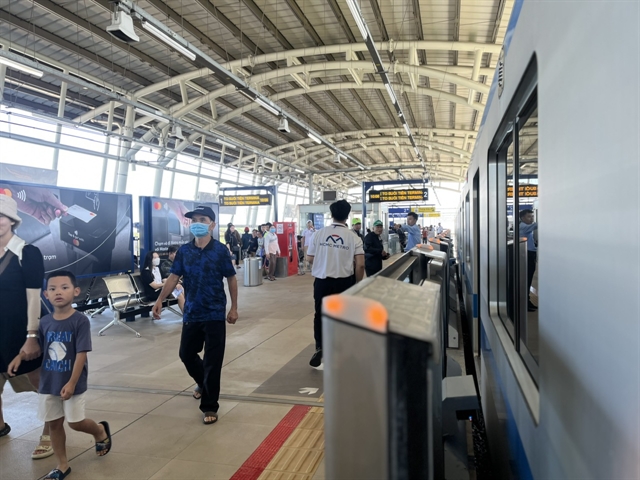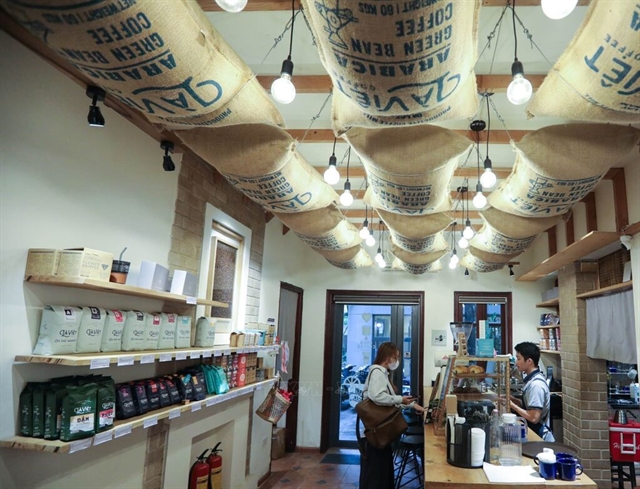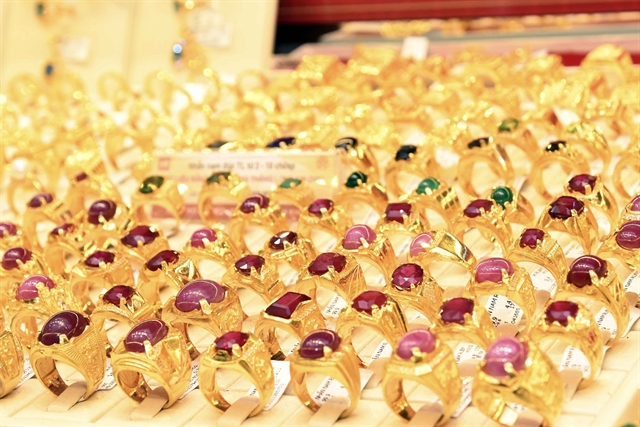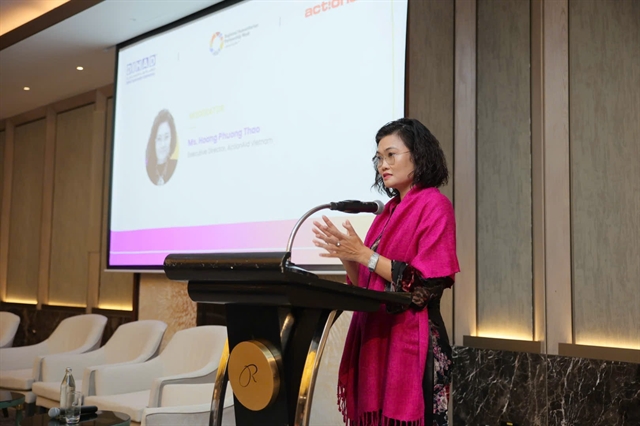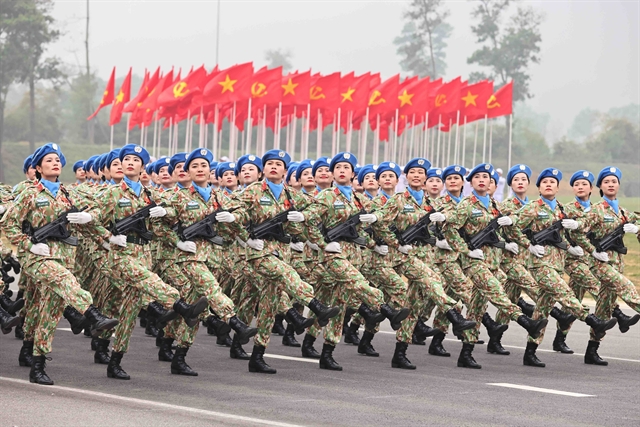 Politics & Law
Politics & Law
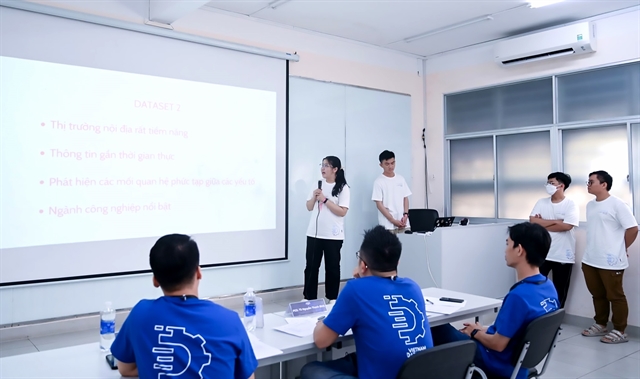
 |
| The Reunification Palace, now a special national historical site, once stood as the residence and seat of power for various presidents of the Republic of Việt Nam (the Sài Gòn regime) before 1975. — VNA/VNS Photo |
The memory of that heroic day—when the nation was made whole once more—remains vivid in the mind of architect Nguyễn Hữu Thái, a living witness to the dawn of national reunification on April 30, 1975.
Now aged 87, but still remarkably lucid and sprightly, Thái recounted with fervour the dramatic hours of April 30, 1975 at the Independence Palace in central Sài Gòn—then the headquarters of the Republic of Việt Nam—as the last moments of war slipped into history.
Back in 1963–1964, as President of the Sài Gòn Student Union, Thái was assigned to work within the so-called “third force” movement—a coalition of intellectuals, students and religious groups who advocated for peace and national reconciliation.
At 9:30am that morning, over the airwaves, General Dương Văn Minh—then President of the Republic of Việt Nam—announced the handover of power to the liberation forces.
From Vạn Hạnh Pagoda, Thái instructed a group of students to seize control of the Sài Gòn Radio Station. He then joined Dr Huỳnh Văn Tòng in a car driven by journalist Nguyễn Vạn Hồng, an underground revolutionary, and made for the Presidential Palace. Their aim: to leverage existing connections with cabinet members to secure a peaceful transfer of power to the South Việt Nam Liberation Front.
Around 10am, Thái slipped through a side gate on Nguyễn Du Street, unchallenged— security checkpoints had by then been dismantled.
Inside, he encountered Minister of Information Lý Quý Chung, who had once helped him evade military conscription, and proposed they seize the radio station to hand it over to the liberation force.
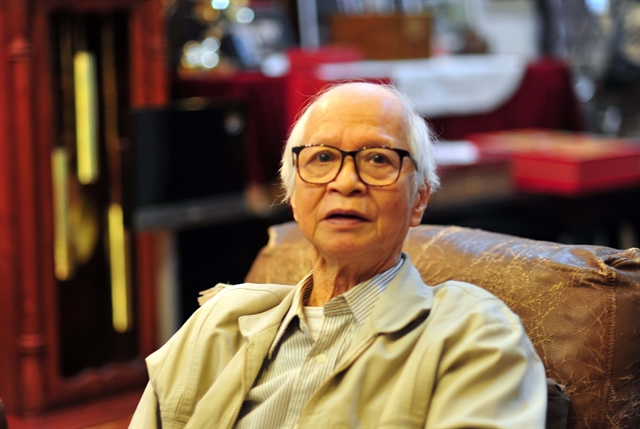 |
| Architect Nguyễn Hữu Thái. VNA/VNS Photo |
Chung agreed, but no driver dared to leave the Palace amid the chaos. As the two men stood stranded on the steps, the ground began to tremble—Liberation Army tanks were rolling down Thống Nhất Boulevard (now Lê Duẩn Boulevard).
“A column of tanks surged forward. The roar of engines, the grind of metal tracks—then, one tank broke through the gates, and others followed, hoisting the flags of the Liberation Front. That image is forever etched in my memory,” Thái recalled.
Lieutenant Bùi Quang Thận, commander of Tank 843, Armoured Brigade 203, Army Corps 2, his tank’s antenna flying the Liberation Front flag, soon entered the Palace grounds, followed by Lt Vũ Đăng Toàn, commander of Tank 390.
Wearing armbands in red and blue—the symbol of the uprising forces—Thái and Tòng greeted the soldiers and led them to the second floor, where Gen Minh’s cabinet awaited.
Lt Toàn remained to guard the officials. Lt Thận, however, expressed a fervent desire to raise the victory flag over the Palace.
Thái and Tòng guided him towards the rooftop, but the main staircase had been bombed weeks earlier by an F-5E fighter jet of the Sài Gòn Air Force piloted by Nguyễn Thành Trung, a secret member of the Liberation Front.
It was Nguyễn Quang Chiêm, chief of staff to the President, who led them to a side stairway and lift. Atop the roof, Thận, Thái and Tòng climbed a wooden ladder to reach the flagpole. Without even a knife to assist them, Lt Thận carefully untied the rope, lowered the three-striped flag of the Sài Gòn regime, and hoisted the golden star, red-and-blue flag of the National Liberation Front.
Before raising the new flag, he signed the old one and noted the time: “11:30”. That note would become a testament—that it was Lt Thận who first raised the liberation flag over the Independence Palace on April 30.
“I had lived most of my youth without knowing peace. So when I saw the flag of the Liberation Front unfurling above Sài Gòn, I felt overwhelmed. That moment marked the end of 117 years of colonial and imperial rule. Việt Nam had peace at last,” said Thái.
By a remarkable twist of fate, the men who bore witness to that historic raising of the flag—at the palace once home to various presidents of the South Việt Nam administration—accidentally came from all three regions of the country: Lt Thận from Thái Bình in the North, architect Thái from Đà Nẵng in the Central region, and Dr Tòng from Tây Ninh in the South.
Their presence together was a living symbol of national unity—of a Việt Nam whole and undivided.
Introducing the surrender broadcast
After the flag was raised, Thái returned to the second floor where President Minh’s cabinet still sat.
The liberation officers requested that the President travel to the Saigon Radio Station to formally announce the surrender, since the Palace’s broadcasting system was not functioning.
At noon on April 30, 1975, after directly commanding the escort of President Minh to the Sài Gòn Radio Station, Captain Phạm Xuân Thệ, deputy commander of Regiment 66, together with officers and soldiers of Regiment 66, Division 304, Army Corps 2, began drafting the surrender declaration for President Minh.
While the document was being prepared, Lt Col Bùi Văn Tùng, political commissar of the Armoured Brigade 203, Army Corps 2, arrived at the station.
Lt Col Tùng completed the final version, which President Minh recorded for broadcast.
When they arrived at the Sài Gòn Radio Station, Thái recalled, the station was already under the liberation army's control, yet silent—its staff had fled, unsure what to do.
They gathered on the second floor to prepare the announcement, while students scrambled to find a technician.
Despite technical issues—especially a weak battery in the tape recorder—the statement was finally recorded on the third attempt, just past 2 pm.
Journalist Kỳ Nhân of the American AP news agency captured the scene in a photograph now etched in the nation's memory. At its centre: President Dương Văn Minh, surrounded by German journalist Borries Gallasch, interpreter Hà Huy Đỉnh, student Hà Thúc Huy, Nguyễn Hữu Thái, Captain Phạm Xuân Thệ, and several soldiers.
Lt Col Tùng and Prime Minister Vũ Văn Mẫu were present but not captured in the frame.
Thái served as a radio presenter for the broadcast, announcing: “We represent the Revolutionary People’s Committee of Sài Gòn – Chợ Lớn – Gia Định… We are Professor Huỳnh Văn Tòng and former President of the Sài Gòn Student Union Nguyễn Hữu Thái… Normal life has returned to Sài Gòn – Hồ Chí Minh City, the city that President Hồ so longed to see liberated… We now present the statements from Mr Dương Văn Minh and Mr Vũ Văn Mẫu of the Sài Gòn administration regarding the surrender…”.
German journalist Gallasch then played the recorded statement by President Minh. This was followed by a live address from Vũ Văn Mẫu calling for reconciliation, and Lt Col Tùng accepted the official surrender.
Thái noted that the entire programme was recorded by Dr Nguyễn Nhã, a historian.
Following the broadcast, Lt Col Tùng escorted former President Minh and former Prime Minister Mẫu back to the Independence Palace, now renamed Reunification Palace.
Thái and the student group remained at the radio station, continuing to broadcast announcements from the provisional revolutionary government. They called upon journalists, artists, and the entire people to unite in nation-building, and aired the surrender announcement repeatedly.
“In the early evening, around 5pm, as I left the station I saw the streets teeming with people. Crowds surged towards the Palace. Sài Gòn was alive, peaceful, jubilant—as though it had never heard the thunder of war. Fifty years have passed, and yet the memory is as vivid as if it were yesterday,” Thái said.
Through decades of hardship—three imprisonments under the Sài Gòn regime, over 10 years before he could complete his studies, years spent abroad before reclaiming his Vietnamese citizenship—architect Nguyễn Hữu Thái remains proud to have played his part in the nation's path to independence and reunification, leaving behind a legacy for generations to come.
“My life has always been for the youth—from my days in the student movement to teaching and writing books. The memory of April 30, 1975 is not just history—it has become part of my very being. It gave me strength through every challenge and kept me committed to serving this country, in every way I could,” he said. VNS

